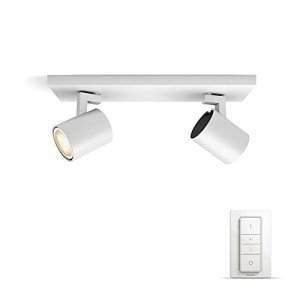Shop Lighting UK: Illuminating the Retail Experience
In the ever-evolving world of retail, the significance of shop lighting can not be overstated. It not just improves the visual appeal of items however also affects customer habits, their state of mind, and the general shopping environment. With developments in technology and style, shop owners in the UK have a myriad of choices to pick from when it comes to lighting services. This post will explore the types of lighting offered, their benefits, and factors to consider for producing the ideal ambiance in a retail area.
Importance of Proper Shop Lighting
Effective shop lighting plays an essential role in customer experience and can considerably impact sales. Here are some crucial reasons adequate lighting is essential for retail environments:
- Highlighting Products: Good lighting draws attention to products, making them more appealing to consumers.
- Producing Atmosphere: The right lighting can set the mood and stimulate feelings, influencing buying choices.
- Enhancing Safety: Well-lit shops are more secure, helping clients navigate without risk of tripping or accidents.
- Improving Visual Merchandising: Proper lighting can boost display screens, making them dynamic and attractive.
Kinds Of Shop Lighting
Shop owners can choose from numerous types of lighting, each serving various functions, including ambient, task, accent, and decorative lighting. Here's a breakdown of each type:
| Type of Lighting | Description | Finest Uses |
|---|---|---|
| Ambient Lighting | Supplies overall lighting to the space. | General retail locations like shops and grocery stores. |
| Task Lighting | Focuses on particular areas to boost presence for tasks. | Checkout counters and dressing rooms. |
| Accent Lighting | Emphasizes particular items or screens, developing a centerpiece. | Display cases, art, or advertising products. |
| Decorative Lighting | Adds aesthetic appeal and enhances the general design. | Chandeliers and special fixtures in high-end stores. |
1. Ambient Lighting
Ambient lighting is the foundational lighting within a shop. It fills the whole space, ensuring that consumers can see and navigate easily. Sellers must consider using LED panels or ceiling-mounted fixtures, as they offer energy performance and exceptional light circulation.
2. Job Lighting
Task lighting is vital for areas where specific activities occur, such as checkout counters or workstations. Shop owners can set up under-cabinet lighting or track lights to focus lighting on these areas, improving the benefit and experience for both staff and customers.
3. Accent Lighting
Accent lighting assists draw attention to particular items or features within the store. This type of lighting can be achieved through spotlights, track lights, or tactically placed wall-mounted fixtures. Recommended Website is particularly reliable for showcasing featured items, marketing displays, or artwork, assisting customer focus where it's most needed.
4. Decorative Lighting
Beyond functionality, decorative lighting components add design and character to a retail space. Unique fixtures, such as pendant lights or extra-large chandeliers, can create a remarkable environment, particularly in shops or high-end retailers. These declaration pieces not just light up however also improve the shop's branding and visual appeal.
Selecting the Right Lighting for Your Shop
When choosing lighting for a retail environment, shop owners ought to think about the following factors:
- Store Type: Different kinds of retail require differing lighting services. A jewelry store may need softer, more focused lights, while a supermarket might need brighter ambient lighting.
- Color Temperature: The color of light can affect the perception of products. Warm lights (under 3000K) create a relaxing feel, while cool lights (above 3000K) can make a space feel more contemporary.
- Energy Efficiency: The usage of LED lighting not only conserves energy however likewise reduces costs in time.
- Versatility: Install dimmers or adjustable fixtures to adapt lighting for different celebrations or seasonal changes.
The Future of Shop Lighting
As technology advances, shop lighting is becoming significantly advanced. Here are some patterns shaping the future of retail lighting in the UK:
- Smart Lighting Solutions: Integrated technology enables remote control and automation of lighting systems through smartphones or home assistants.
- Sustainable Lighting: There is a growing emphasis on environment-friendly solutions, with merchants going with products that decrease environmental impact.
- Focal Point Lighting: Retailers are progressively utilizing lighting to produce specific focal points that assist client traffic and enhance product display screens.
Frequently Asked Questions about Shop Lighting in the UK
Q: What is the finest type of lighting for a clothes store?A: A combination of
ambient and accent lighting is generally best. Ambient lighting is essential for total visibility, while accent lighting can assist highlight essential pieces or collections. Q: How can I make my shop lighting more energy-efficient? A: Consider utilizing LED lights, installing motion sensors, or incorporating
dimmers. This lowers energy usage and expenses in the long run. Q: Should I utilize natural light in my shop?A: Yes, utilizing natural light can boost customer experience whileminimizing energy expenses. However, it is essential to balance natural light with synthetic lighting, especially on cloudy days. Q: How often need to I change my shop's lighting fixtures?A: This depends on the kind of fixtures utilized. LED lights can last up to 25,000 hours, while traditional bulbs
may need to be changed more often. Regular maintenance checks are advised. In an increasingly competitive retail environment, shop lighting plays an invaluable role in shaping customer experiences and driving sales. Sellers in the UK have a large range of choices and innovations at their disposal to create the ideal atmosphere. By comprehending the value of the various types of lighting and how to execute them successfully, shop owners can boost their area, making shopping more pleasant for clients while increasing their bottom line.

